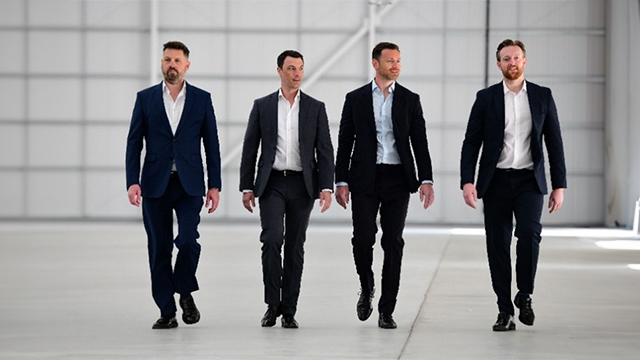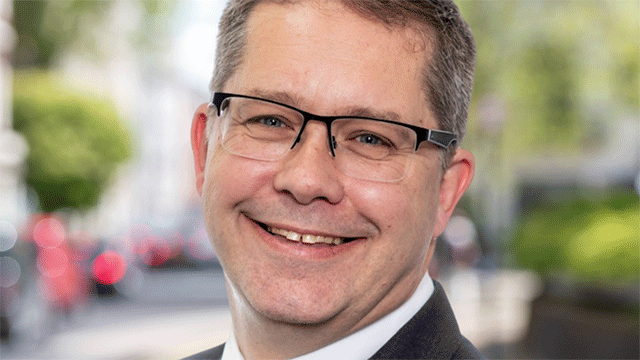Occupied on long leases by the Royal Bank of Scotland, 1 Spinningfields Square and 1 Hardman Boulevard are as prime as Manchester office property gets.
That’s why the announcement in late April that RBS’s Spinningfields offices were in the hands of administrators and would be sold for north of £300m, left many surprised – and some shocked.
So how did it happen? Cautious silence from sales agent Savills, administrator EY and from RBS themselves has meant only a handful understand the full story. But now that story can be told.
The tale involves canny investors, a property boom that delivered massive returns to the building’s owners, and then a long, unexpected fall in interest rates that, some say, helped put the building’s special-purpose corporate owners into administration.
It’s also a story about knowing when to take a profit – and when to walk away.
The journey begins in 2002 when Matrix Group put together a consortium of 200 un-named investors prepared to buy into the first slice of Allied London’s 22-acre Spinningfields project.
Whoever they were, they got a bargain. In 2002 Matrix forward-funded the 350,000 sq ft 1 Hardman Square and 150,000 sq ft 1 Spinningfields Square for £150m. Special-purpose companies were created to buy the two blocks: Plot 101 Nominee Ltd, Plot 101 Nominee 2 Ltd, Plot 403-405 Nominee Ltd and Plot 403-405 Nominee 2 Ltd.
By 2005 the buildings were occupied, rising in value and producing income. The investors were sitting pretty. So pretty, in fact, that they turned down a proposal from the Matrix management to sell the two RBS buildings, then valued at £220m. Such was their confidence that 2006 saw Matrix buy the 180,000 sq ft Spinningfields offices of now-collapsed law firm Halliwell Landau and the 160,000 sq ft offices of the Guardian Media Group.
By 2007 the original five-year loan was coming to an end. The investors could have sold the building with 16 years of RBS lease left, and that might have given them a 50% return.
Not bad – but not as good as a refinancing package that re-geared the lease.
RBS agreed a £290m deal which, from the distance of 2014, looks generous. “Investors got three times their money back,” says one source familiar with the details. “It worked for us – significantly,” one investor told EG.
The terms included a new RBS lease of 30 years, starting from 2008 and rebased at 2008 rents (top rents in 2002 were around £25 per sq ft, but were scraping £30 per sq ft by 2007-08). The lease replaced five-yearly reviews with a fixed rental uplift of 3% a year.
To back the loan RBS insisted on an interest rate swap: a little surprising, perhaps, since it was itself the tenant whose income stood behind the loan’s repayment.
The deal left RBS as both lender and tenant, and through the swap as guarantor, tied together by leases and interest rate swaps.
Why would RBS agree to such a seemingly generous deal? The answer isn’t entirely clear. “Bankers work on ratios,” says one source. But the refinancing coincided with attempts to buy Dutch banking group ABM-Amro. Sources say the £50m reverse premium they picked up from the deal would have a creative place in RBS’s grander plans.
Then interest rates plunged, making the swap expensive, even more so as it was timed to match the 30-year lease, not the five-year loan.
It was clear that soon after 2008 the buildings were not worth the combined value of the loan and the interest rate swap. The swap alone threatened a £140m loss. And so 1 Spinningfields Square and 1 Hardman Boulevard were underwater.
For understandable reasons of their own, RBS did not act to realise the loss. In the meantime, January 2012 saw freeholder and developer Allied London refinance and extend a £22m credit facility with RBS while Matrix Group itself went into administration in November 2012.
The crisis came, conveniently, in spring 2013 as Manchester’s investment and occupational markets recovered their confidence and the refinancing loans expired.
The bank hesitated: either it had to write off about £100m on the property, or as much or more on the swap, and neither seemed very appealing.
Administrators from EY confirmed the default: “Bank facilities subsequently expired in June 2013 and the non-payment of the facilities by the partnership and subsequent failure to reach a consensual restructuring with the bank led to the appointment of the administrators over the companies holding the legal title to the properties.”
Said one banking source: “The original investors had taken their money in 2008 and now decided to walk away. There’s a capital gains tax element too. Taking the loss could be quite helpful. I can see them being happy to let the loan fall over.”
By spring this year RBS finally felt it could resolve the situation. A statement from administrator EY says: “Following an extensive period of discussions with the borrower with a view to reaching a workable consensual solution, by 31 March 2014 it became apparent this would not be achievable within an acceptable timeframe despite the best efforts of all parties. Consequently RBS decided, regrettably, that administration was the only viable way forward to achieve repayment.”
Alan Bloom, Benjamin Cairns and Craig Lewis of EY, joint administrators of the four special-purpose vehicles – and by April the EY real estate corporate finance team and Savills – were tasked with selling the two blocks. The asking price is believed to be just under £310m.
Sale prospects
The RBS buildings are expected to sell quickly with international buyers in the frame. Although the asking price is just under £310m, some sources suggest the price could reach £340m.
In the wake of the £132m sale of Bruntwood’s City Tower to asset manager Schroders, and M&R Real Estate’s £45m disposal of the Royal Exchange to US investor Starwood Capital and UK asset manager Trinity IM, investor interest remains strong.










